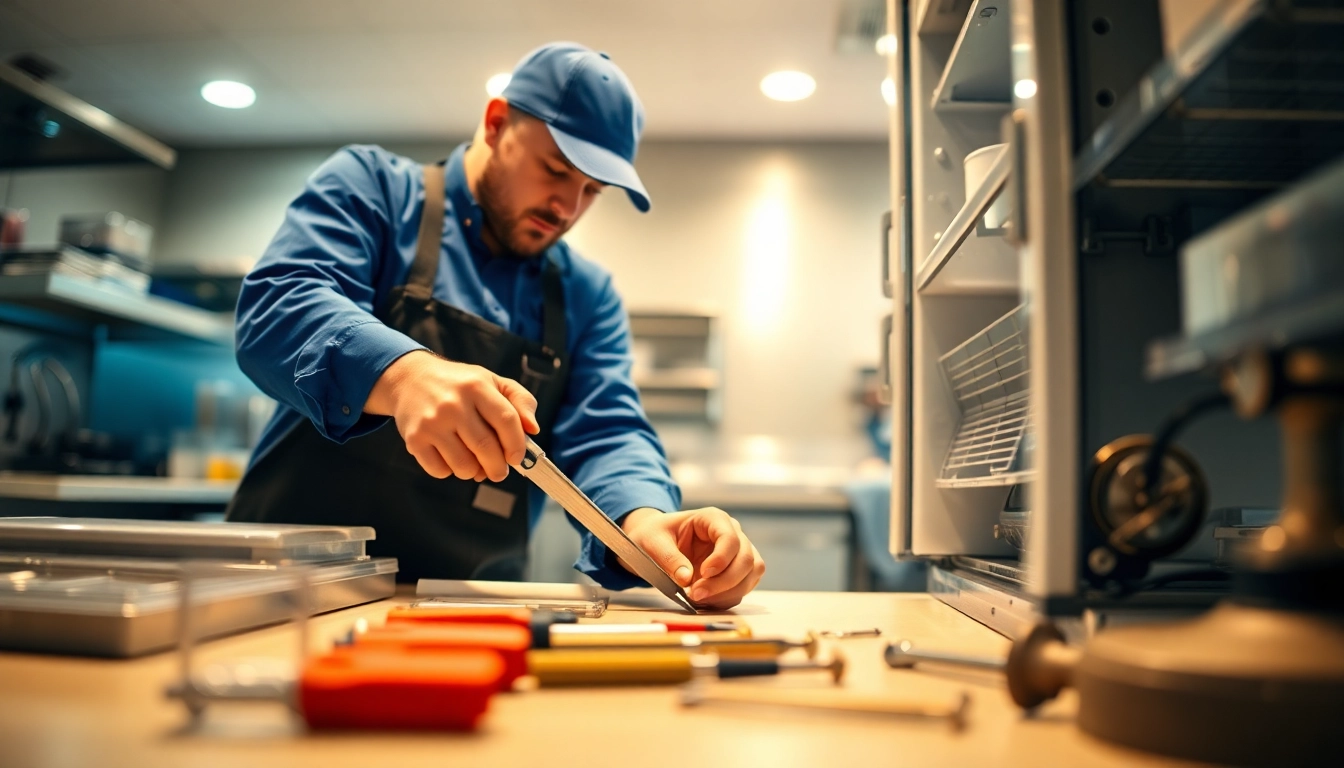Essential Guide to Chef Base Repair: Tips, Techniques, and Troubleshooting
Understanding Chef Base Repair
In the fast-paced world of professional kitchens, efficiency and functionality are paramount. A chef base, serving as both a refrigerated storage area and a workspace, plays a vital role. However, like any other piece of kitchen equipment, it may require chef base repair over time due to wear and tear or unexpected malfunctions. This guide delves into the essentials of chef base repair, enabling you to maintain optimal kitchen performance.
What is a Chef Base?
A chef base is a multifunctional unit designed to support cooking operations by providing a convenient area to store ingredients while keeping them at safe temperatures. It typically features a refrigeration compartment beneath your cooking equipment, allowing chefs to have easy access to essential ingredients while minimizing movement around the kitchen. Its design maximizes efficiency, as refrigerated drawers or shelves allow ingredients to be stored directly where they are needed, facilitating a streamlined workflow.
Common Issues with Chef Bases
As with any commercial kitchen appliance, chef bases are not immune to problems. Some common issues include:
- Temperature Fluctuations: Chef bases must maintain a consistent temperature. When they fail to do so, it can jeopardize food safety.
- Compressor Failures: These are crucial components for cooling, and failures can lead to longer repair times.
- Electrical Issues: Faulty wiring or blown fuses can disrupt power supply and operation.
- Door Seal Problems: Worn door seals can lead to airflow issues, affecting refrigerating efficiency.
- Physical Damage: Equipment placed on the chef base can lead to dents or structural weaknesses.
Importance of Timely Repairs
Performing timely repairs on a chef base is critical for several reasons:
- Food Safety: Keeping the right temperature is crucial to prevent foodborne illnesses.
- Cost Efficiency: Addressing issues promptly can save on costly replacements and excessive energy use due to inefficient operation.
- Longevity: Regular maintenance and repairs help prolong the life of chef bases, ensuring they serve your kitchen investment for years.
Identifying Problems in Your Chef Base
Signs Your Chef Base Needs Repair
Early detection of issues can save you from major headaches. Here are signs that your chef base may need repair:
- Unusual noises coming from the unit, such as grinding or clicking sounds.
- Excessive frost buildup in the refrigeration compartment.
- Food items not staying cold or reaching unsafe temperatures.
- Perspiration on the surface due to poor insulation.
- Frequent cycling of the compressor or inconsistent functionality.
Diagnostic Steps to Evaluate Issues
If you suspect your chef base is not functioning correctly, performing a thorough diagnosis is essential. Follow these steps:
- Check the power supply: Ensure the unit is plugged in and receiving power.
- Inspect the settings: Double-check the thermostat settings.
- Examine the compressor: Listen for unusual sounds and check if it is running correctly.
- Look for ice buildup: Open the service panel, if applicable, and inspect for frost accumulation.
- Inspect door seals: Ensure they are sealing properly and not letting cold air escape.
Safety Precautions During Inspection
Prioritizing safety during inspection is crucial. Here are some tips:
- Always unplug the unit before performing any internal checks.
- Use insulated gloves to avoid electric shocks.
- Ensure that tools are dry and free from any liquids.
- Be cautious of sharp components within the unit, especially around the compressor.
DIY Chef Base Repair Techniques
Tools You Need for Chef Base Repairs
For effective DIY repairs, having the right tools is essential. Here’s a list of tools you might need:
- Screwdriver set: For various screws and fixtures.
- Multimeter: To check electrical systems and wiring.
- Wrench set: For plumbing connections or bolts.
- Insulation gloves: To protect against electric shock.
- Replacement parts: Keep essential parts on hand, such as gaskets, fans, and thermostats.
Step-by-Step Guide to Common Repairs
Here is a quick guide to repairing some common issues in chef bases:
Fixing Temperature Issues
- Check and replace faulty thermostats.
- Ensure the compressor is functioning properly. Replace if necessary.
- Inspect gaskets and seals for any wear, replacing as needed to restore cold air retention.
Dealing with Frost Build-Up
- Unplug the appliance and allow it to defrost completely.
- Inspect drain holes for blockages and clear them.
- Examine insulation and seals; replace any compromised areas.
Replacing Worn Door Seals
- Remove old seals with a screwdriver or knife.
- Install a new door gasket by pressing it firmly into the track.
- Ensure all corners are sealed tightly to avoid air leakage.
When to Call a Professional
While some issues can be resolved with DIY techniques, others are best left to professionals. Call an expert if:
- You encounter complex electrical problems you cannot resolve safely.
- The compressor needs to be replaced or if refrigerant levels are low.
- Multiple systems are failing simultaneously.
- You experience repeated issues even after repairs.
Maintenance Tips for Longevity
Routine Cleaning Practices
Regular cleaning is critical for ensuring that the chef base operates efficiently and functions effectively:
- Wipe down surfaces daily to prevent buildup.
- Deep clean the interior monthly, removing all contents, defrosting, and sanitizing.
- Check drain pans and ensure they are clear of debris.
- Inspect and clean condenser coils at least bi-annually.
Preventative Measures to Avoid Repairs
Taking a proactive approach can minimize costly repairs. Here are some measures to consider:
- Ensure proper ventilation around the chef base at all times.
- Stock replacement parts for common issues regularly.
- Schedule regular maintenance checks with a professional service.
- Train staff on proper use and handling of the equipment.
Best Practices for Chef Base Usage
Additionally, following best practices can help ensure your chef base operates smoothly:
- Avoid overloading the unit beyond its capacity.
- Keep ingredients organized for easy access.
- Use covers when possible to maintain temperature integrity.
- Regularly monitor internal temperatures to ensure they remain optimal.
Cost Considerations and Resources
Estimated Costs of Chef Base Repair
Understanding the potential costs involved in repairs helps in budgeting properly. Depending on the severity of the issue, costs can vary considerably:
- Minor repairs (e.g., part replacements): $50 – $150.
- Compressor replacement: $300 – $600.
- Electrical system repairs: $200 – $400.
- Complete unit replacement could vary dramatically, generally from $1,500 to $5,000.
Where to Find Replacement Parts
When repairs are necessary, knowing where to find reliable replacement parts is essential. Consider these resources:
- Specialized Suppliers: Websites like Parts Town and Migali offer OEM parts specifically for chef bases.
- Local Restaurant Supply Stores: Often stock necessary components and provide guidance.
- Manufacturer Websites: Directly purchasing from the manufacturer may also ensure compatibility.
Professional Repair Services: How to Choose
If you decide to hire professionals, consider the following when selecting a service:
- Look for licensed and insured technicians with experience in commercial kitchen appliances.
- Check customer reviews and ask for references.
- Inquire about warranties on repairs made.
- Gather several estimates and compare. Ensure they detail the work to be done and the rationale behind pricing.










